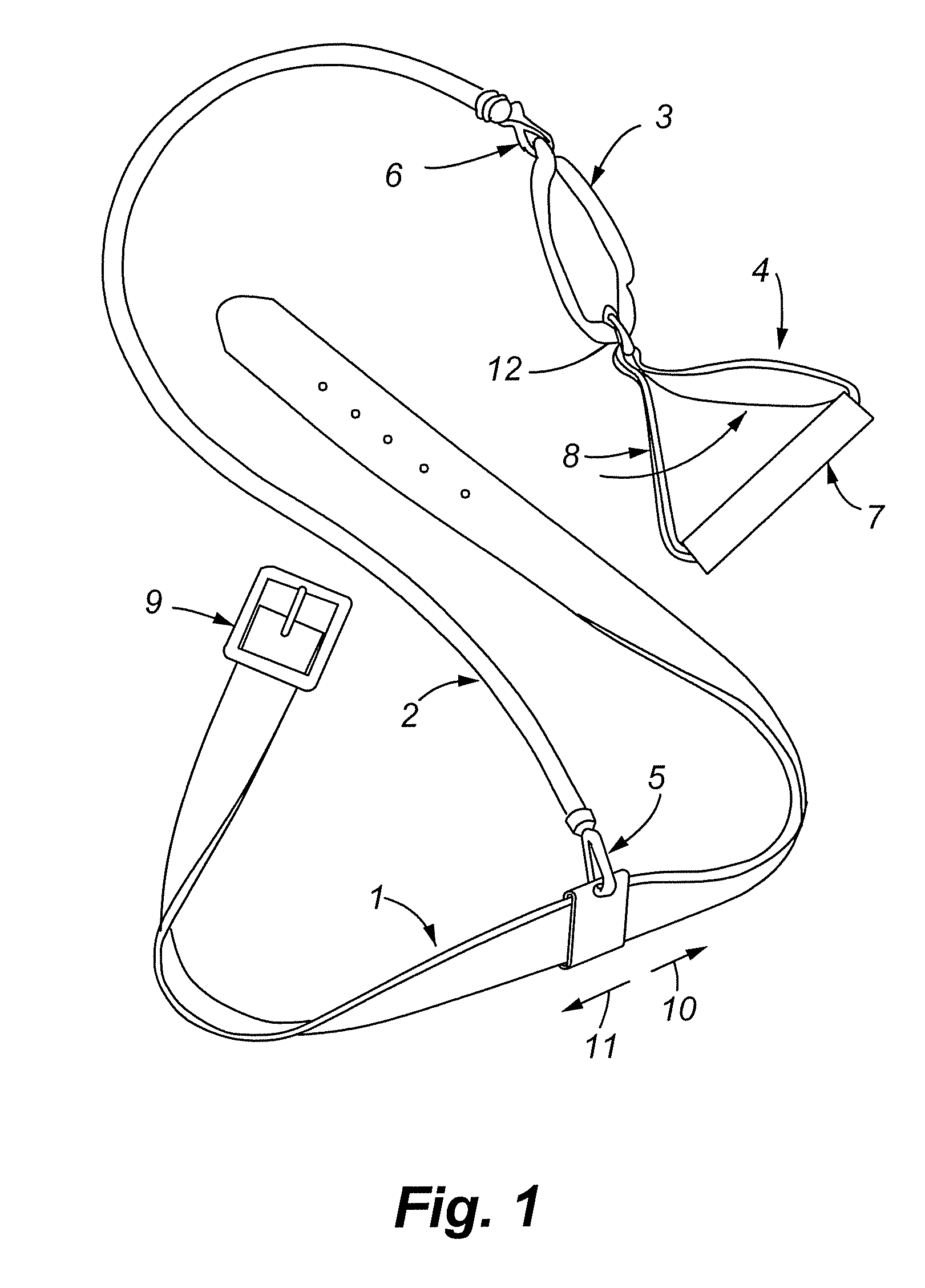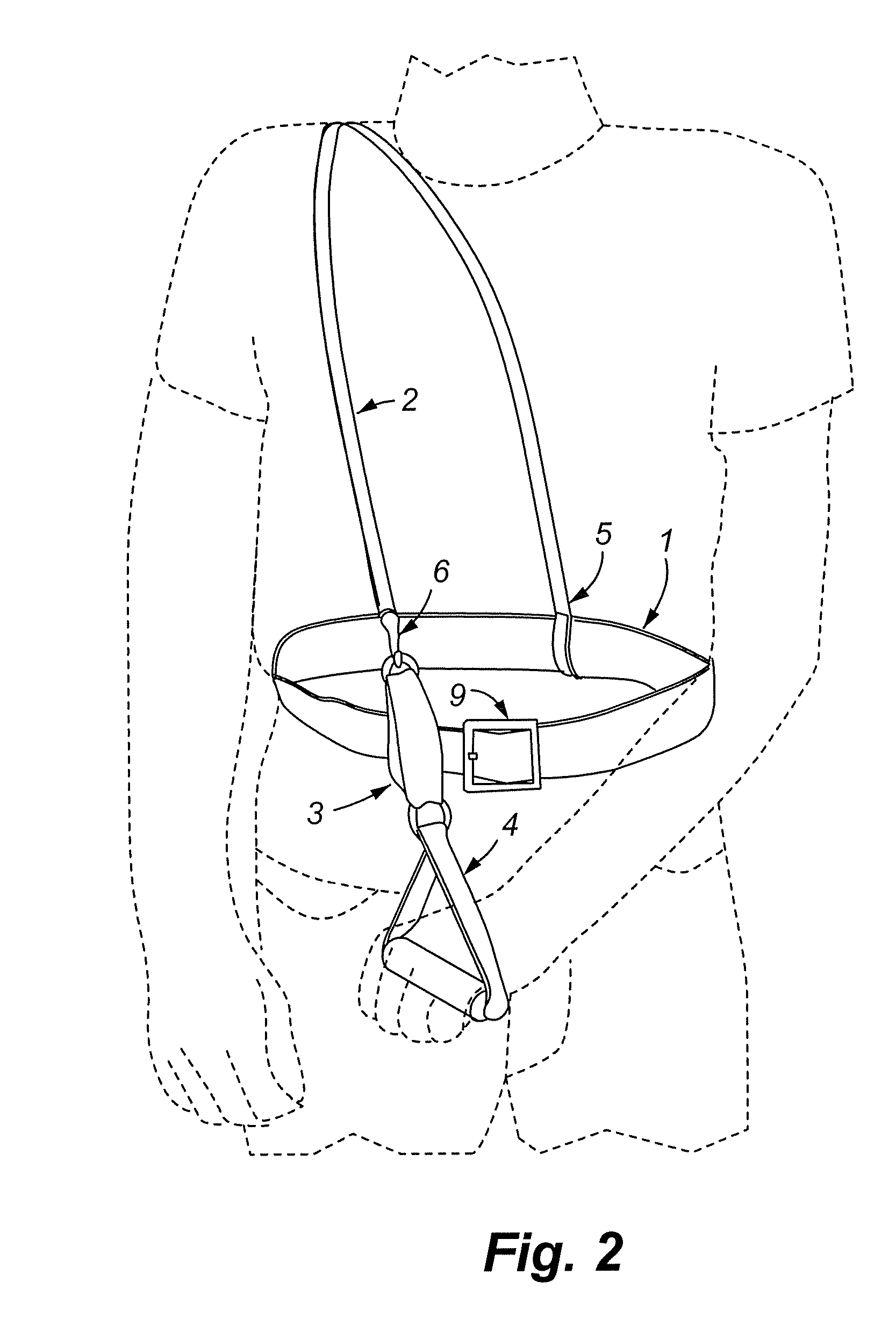Adjustable shoulder orthotic
a shoulder orthotic and adjustable technology, applied in the field of orthotics, can solve the problems of limiting the use of the hand, cumbersome and uncomfortable, and the deltoid may atrophy, and achieve the effect of ensuring the freedom of movement of the strut, controlling unwanted vertical, lateral or rotational effects, and reducing the risk of injury
- Summary
- Abstract
- Description
- Claims
- Application Information
AI Technical Summary
Benefits of technology
Problems solved by technology
Method used
Image
Examples
Embodiment Construction
[0036] Additional objects, advantages, and novel features of this invention will become apparent to those skilled in the art upon examination of FIGS. 1-7 and the following description of the preferred embodiments shown therein, which are not intended to be limiting. FIG. 1 shows a torso belt (1) having a buckle clasp (9). The torso belt is releasably-attached to an elastic shoulder suspension strap (2) through a quick-release clip (5). The embodiment shown in FIG. 1 includes an adjustable length attachment (3) in the form of a loop of nylon webbing that can be adjusted and fastened with hook and loop closure material. The adjustable length attachment (3) is releasably-attached to the elastic shoulder suspension strap (2) with a quick-release clip (6). A handle grip (4) is attached to the adjustable length attachment (3) at a D-ring (12). The handle grip (4) is triangular in shape having two sides (8) of the triangular form made of flexible nylon webbing and the remaining side (7) b...
PUM
 Login to View More
Login to View More Abstract
Description
Claims
Application Information
 Login to View More
Login to View More - R&D
- Intellectual Property
- Life Sciences
- Materials
- Tech Scout
- Unparalleled Data Quality
- Higher Quality Content
- 60% Fewer Hallucinations
Browse by: Latest US Patents, China's latest patents, Technical Efficacy Thesaurus, Application Domain, Technology Topic, Popular Technical Reports.
© 2025 PatSnap. All rights reserved.Legal|Privacy policy|Modern Slavery Act Transparency Statement|Sitemap|About US| Contact US: help@patsnap.com



